| Revista Umělec 2004/2 >> All Tomorrow’s Art—A Party | Lista de todas las ediciones | ||||||||||||
|
|||||||||||||
All Tomorrow’s Art—A PartyRevista Umělec 2004/201.02.2004 Tony Ozuna | en cs |
|||||||||||||
|
All Tomorrow’s Parties is a novel by cyberpunk writer, William Gibson. It is one of his best. It is also one of the most haunting songs ever recorded by Nico and the Velvet Underground, back in the day. And All Tomorrow’s Parties is finally a remarkable noise and fringe rock music festival that is held twice a year—one in England and one in southern California. The festival in England is held at an unusual location, in the spring, at Camber Sands, East Sussex, on the east coast. This region is a hallowed one, since the late filmmaker Derek Jarman’s cottage and mystical garden are just a few kilometers away in a remote coastal village called Dungeness. The nearby festival site is a holiday beach complex (normally) for families, with a huge children’s adventure playground that looks like a cartoon set, and a “Wacky Races” go-cart track just beside the shocking-blue, two-story main building, where the various concerts and performances were held.
The concept behind the festival is like a museum’s for temporary exhibitions. The promoter invites a curator, who could be a musician, artist, or writer to choose a line-up of bands or performers that reflect his or her musical taste, or record (CD) collection. The curator should also choose people who they feel influenced by or strongly connected to. This makes the line-up very personal, including lots of friends of the curator, but also bands from all over the world—a curator’s (and like-minded music lovers) dream line-up. This year, the festival in England was held over two weekends—the last in March and the first in April. The curator for the second weekend’s Saturday night program was Sonic Youth, the nobles of New York’s alternative or avant-garde music and art scene. The curators of Sunday’s (last night) line-up were the festival directors, Barry Hogan and Helen Cottage, from London, and their selections mirrored that of Sonic Youth—with a few exceptions, it was mostly drone, noise and feedback over intense rock drums uber alles. When Sonic Youth curated the first ATP festival in the U.S. (in Los Angeles, 2002), one of the groups that had the most buzz before its show was Destroy All Monsters (DAM), the mid 70s art collective/noise band originally formed by Mike Kelly, Jim Shaw, Carey Loren and assorted friends, when they were all art students in Ann Arbor, Michigan. DAM co-founder, Cary Loren, has said, “I think the term ‘anti-rock’ correctly describes what we were about….DAM was a complex art collective. Music was part of our expression, but so was painting, collage, film, theater, ‘zines, etc. Each of us brought a unique outlook and these obsessions came together in sort of a massive attack that looks like anarchy, but is really a tuned collage of fine elements. Early performances were pure noise-fests: feedback fuzz drones, squealing amplified toys, screaming, tape loop distortions, bashing metal and drums, etc. but things could also get equally soft and quiet….We played with a lot of traditional structure but just tore it apart.” We played for ourselves. Our early audiences were very small—and did nothing but encourage us to stop playing. We would often play ‘guerilla style’ and just show up at a party and say we were the band—we were always shut down and asked to leave. We often discussed our problem of audience reaction—and their basic hatred of us—but we kept recording and documenting ourselves despite that.” More than anything else, Mike Kelly’s (as well as Jim Shaw’s) later high status in the art scene helped resurrect the obscure band in the mid 90s. This is when their bedroom-recorded, lo-fi tapes, from the 1970s, were released by Thurston Moore’s label, Ecstatic Peace, and they had a few reunion performances, including a successful tour to Japan. Destroy All Monsters, didn’t play England this last ATP, unfortunately, but their pioneering, iconoclastic aesthetic—visual artists do musical performance, mostly playing noise and experimental anti-rock—was as always at the forefront of the festival. Angelblood played Saturday night, on the larger stage upstairs, just before actor/hipster turned musician, Vincent Gallo, and headliners Sonic Youth. Like DAM, Angelblood is a music band/art collective. They are a band of artists from New York City/Brooklyn, which includes Rita Ackermann (vocals), Lizzy Bougatsos (vocals), Brian Degraw (bass), Dave Nuss (drums), Matt Heyner and Anders Nilsson (guitar). Their sound is not noise, though; it’s an intriguing combination of darker 80s new wave and 70-80s heavy metal with an East European punk tinge that would sound perfectly at home in Prague or Budapest. This is a dark-edged, pessimistic tone that Western bands don’t have. Angelblood live has a Gothic, somber lead singer (Bougatsos) beside a swinging and cheerful, co-singer, (Ackermann), which creates a perfect visual impression to match the band’s dark and offbeat sound. According to Ackermann, “Angelblood is basically an art collective, not only making music...but also curating group shows all over the world, at Annet Gelink Gallery in Amsterdam, at Peter Kilchmann Gallery in Zurich, and at Printed Matters, Participant Inc., and Kenny Schackter/Rove in New York. On these shows, Angelblood participates with either an installation or a ‘happening’ kind of performance.” Their performance-installations are similarly dark and loud, conjuring animistic spirits to address ominous themes like “Anti-Pure,” “Violence the true Way,” and “The Human Face is an Empty Force, a Field of Death.” At All Tomorrow’s Parties, Angelblood rocked out, and the crowd loved it. However, Ackermann says the band rarely plays New York, and when it does the audience reaction is not as positive as it was at ATP. She says, “Angelblood is very on its own. It doesn’t belong to any ‘scenes’ or musical circles. We’re mostly invited by art institutions, where they try to make the connections between art and music, but somehow we don’t fit on those shows very well. Once we played on the edge of the woods on an artist’s property, where the bass player played his bass on the top of a tree while Lizzie and I rolled around in the dirt under, singing. Another time, we played in a very prestigious dance club in New York, but after fifteen minutes they pulled the plug on us, so the drummer threw his cymbal off the stage and immediately we all got escorted out to the street….ATP was our best experience, the sound was good, they let us play….” Rita Ackermann is the most recognized visual artist in Angelblood, and she was the artist with the most stature to perform at ATP, this time around. She moved to New York in 1991, when she received a grant from the Hanes Foundation to study at the New York Studio School. Before that she studied at the Academy of Fine Arts in Budapest, and the Academy of Applied Arts in Vienna. Born and raised in Budapest, she is the source of the band’s dark and unique East European flavor. Much of Ackermann’s most recent solo work reflects the dark and lurking violence of the name, Angelblood. Her painting, Dance of the Wild Hunt, is a circle of barely clothed women dancing around a flame, with bottles on their heads—it appears that they are being seduced by fire and they’re seducing the flames. A skeletal, demonic figure rises above them, from the flames—it is an uncomfortable image, like Shaman, another work which seats a bare legged young blonde woman in tuxedo coat and top hat on a naked person who has the head of a horrific beast. The beast is licking at the face of a naked, angelic babe. Ackermann’s attraction to the supernatural and pagan ritual is both suggestive and seductive. Her earlier work, when she debuted at Andrea Rosen in NYC in 1994, was more punk—simple and direct, or straight to the punch. It reminds me of the Hernandez Brothers comics, but more menacing because Ackermann has a far deeper agenda in her art. Another band (mostly) composed of visual artists, at ATP this spring, was Bardo Pond. To put it as simply as possible, Bardo Pond’s sound is dense. To be more precise, one has to use references like Black Sabbath meets obscure 70s krautrock (psychedelic German rock) bands like Amon Duul II, Faust, and Can. Mix this with trippy free jazz, and exotic found-sound, including the church bells ringing in Prague’s Old Town Square and this just starts to describe the full fuzz of Bardo Pond. Using no band comparisons, imagine the sound of an electrified hummingbird: sometimes there’s motion, with twists and turns in their songs; other times, the sound is feverishly kept, hovering in place. Bardo Pond creates an intense wall of sound that you expect to break through your skin, but, instead, it just hums and buzzes all over you. You may be left dumbfounded, because the sound doesn’t assault or invade you, as you were anticipating. It’s a suspended explosion, which leaves you free to take your own course. Meaning their music doesn’t lead you through a song. Instead, it opens up a hole in the universe for you to do your own exploring. Simultaneously, they are constantly exploring their instruments. Going to see a Bardo Pond show is like going on an expedition, and your mind will be both exhausted and invigorated by the end of the trip. All but one of Bardo Pond (not the drummer, Ed) are art school graduates and they all have strong ties to the young art community in Philadelphia, where the band is from. Brothers Mike and John Gibbons, the two thrashing guitar heads in the band, are painters; Mike studied art in Chicago and in LA at Otis Parsons. John studied at the Pennsylvania Academy of Fine Arts, where he met Isobel Sollenberger, the band’s gentle screamer. Clint Takeda, bass player, is the most recognized artist in the band. His drawings can be found on the cover art for most of their recordings, and just like their music, his art is dense—hard to categorize. Clint Takeda (1962) is Japanese-American, raised in both Japan and the U.S. (first Michigan, then California). His fascination with Japanese kid culture, otaku, super human comics (mantra-writer) figures like Astro Boy (Osamu Tezuka) and nuclear-mutants, hybrid-monsters from sci-fi films like Ultraman Bira, Mothra, and Monster X, combined with Japanese noise bands like Acid Mothers and High Rise—and illustrators for their cover art like Imiri Sakabashira—is obvious in his work. All this leads to surreal sculptures, mind-warped humanoid and animalistic figures—they can be children with abnormally sized heads, ducks without faces, or an elephant with an alien fright on its back. He says that they are creations of his hallucinations, and so they also live in various states of trance, just kind of stranded in places far from our reality. Takeda explains that characters in his sculptures, paintings and drawings come from far away places, or from the neighborhood; either way, they all seem to have arrived fucked up, damaged by the trip. What is often left are just fragments of their being; for instance, some have wings, but they will always be tattered. Some characters have names, like “Skullbunny,” “bluey,” or “Other Duck” and some have no names. Some make sounds, like “Spore,” “Black Oracle,” and “Tweeter.” His more recent work with sound is closely linked to the band’s realm, becoming more of an installation. “Spore,” for instance, is seven feet tall with a 12 inch speaker set inside it. It rumbles with the sound of one of Takeda’s ambient low-end sound tracks that fill the room, and there were 40 cd cases mounted on the wall with an original drawing in each. “Black Oracle” is a glob-like monster thing with a speaker where its heart should be. It had a more rock soundtrack emitting from it featuring Takeda’s guitar freak outs, with occasional drum beats, provided by his wife, Shannon Bowser. “Tweeter” has a small speaker set in where you would expect his mouth. This was part of a set with a large mushroom hanging in front of it, emitting the same soundtrack at a higher frequency. Takeda studied sculpture at UC Santa Barbara, with installation artist, Ann Hamilton, and got his MFA at Rutgers University. His Philadelphia (Bardo Pond) connection starts with his studies at Rutgers, in New Jersey. For him, Philadelphia can also be an inspiration for his art. “It’s the city that David Lynch called the most important influence in his life. This is where he [Lynch-ed] was an art student. This is where he made the Grandmother, and this is where Eraserhead is from, even though he made it in LA. This is where Marcel Duchamp’s last work of art, “Etant donnes...” the illuminating gas, resides at the Philadelphia Art Museum. This is the city where Sun Ra decided to settle in late 1968 to continue his work of making music that heals. May he rest in peace.” Takeda and the rest of the band also get inspiration from their friends in the art community. He says, “The art scene inpires us because a lot of our friends are active artists in the scene whose work we respect a lot. They are creative people who push me because they are who I want to show things to. They are the people whose response to my work I care about. If my sculptures or drawings make them laugh or cringe, that means a lot to me. There are also a lot of younger artists who I might not know but whose stuff might make me feel like I should lose more control or lose my mind more. Our friends in the art scene affect the band sound when they come out to see us play live and make a lot of noise. This makes us want to play harder. At these times I try to work in much more solo bass freak out parts.” A few days before their show at All Tomorrow’s Parties, Bardo Pond played at the Institute for Contemporary Art, in London. The setting was intimate, and the audience in gallery attire. The band enveloped the space with their sound, practically shaking the building to the ground. The show was a success, and this is a testament to how this band’s musicianship can command an audience at a rock concert or a gallery—by tenderly crushing eardrums with artistic authority. Angelblood is working on a different plane, an animistic horizon with an intriguing, dark metal soundtrack. And stepping out of this realm, on occasion, Rita Ackermann most poetically, releases a solo record, on Thurston Moore’s label, where she sings a sad Hungarian folk song, over and over.... Epilogue: Next year’s festival at Camber Sands, ATP 2005 is being billed as a “super avant- garde all-star triple weekend extravaganza.” There will be three different curators—Throbbing Gristle (industrial noise legends), Vincent Gallo (heartthrob, indies actor/musician), and most interestingly, Jake and Dinos Chapman, the provocative British art siblings. Just to get a sense of what the ATP fans expect from the Chapman Brothers, here’s what just some had to say on drownedinsound.com: “What the hell do Jake and Dinos Chapman know about music? It’s probably going to be a bunch of trendy Nathan Barley wankers playing bleepy urban soundscapes to projections of their shit art. Twats.” (posted by timhulio) “I’m a bit worried what the Chapman brothers might do, but apparently they did the stage set for some recent Wire gigs, so it might be okay.” (posted by jellybean) “Chapman brothers are going to have a rubbish line up aren’t they? And yet it’s ATP so there’s actually only certain types of bands to choose from anyway…” (posted by pollydoodle) “Why does everyone assume that because they are artists, they will know nothing about decent music? Art and music cross over all the time. I think it sounds like a great idea (being optimistic until the list of bands is out)! Many artists dabble in music i.e., Kai Althoff, Wolfgang Tillmans and vice versa. Bring it on I say!” (Posted by marmite) “Mmm. I totally agree that just cos they’re artists doesn’t mean they’ll pick shit stuff. I think they’ll pick shit stuff because they’re the Chapman bros.” (posted by Jesta)
01.02.2004
Artículos recomendados
|
|||||||||||||
|
04.02.2020 10:17
Letošní 50. ročník Art Basel přilákal celkem 93 000 návštěvníků a sběratelů z 80 zemí světa. 290 prémiových galerií představilo umělecká díla od počátku 20. století až po současnost. Hlavní sektor přehlídky, tradičně v prvním patře výstavního prostoru, představil 232 předních galerií z celého světa nabízející umění nejvyšší kvality. Veletrh ukázal vzestupný trend prodeje prostřednictvím galerií jak soukromým sbírkám, tak i institucím. Kromě hlavního veletrhu stály za návštěvu i ty přidružené: Volta, Liste a Photo Basel, k tomu doprovodné programy a výstavy v místních institucích, které kvalitou daleko přesahují hranice města tj. Kunsthalle Basel, Kunstmuseum, Tinguely muzeum nebo Fondation Beyeler.
|







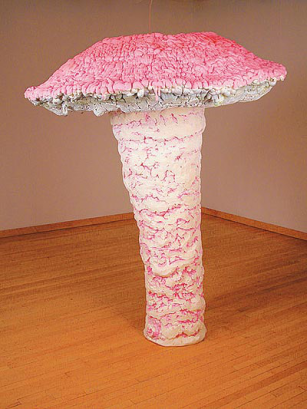
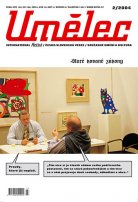



















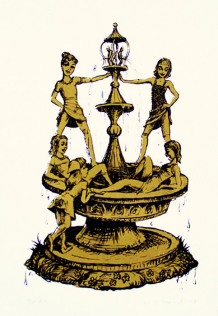




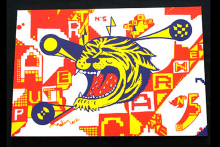

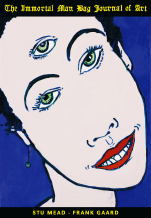
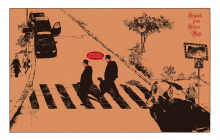


 New book by I.M.Jirous in English at our online bookshop.
New book by I.M.Jirous in English at our online bookshop.
Comentarios
Actualmente no hay comentariosAgregar nuevo comentario